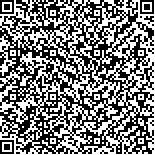郭艮春,朱振华,李万浪,等.术前强化功能训练对膝关节骨性关节炎患者全膝关节置换术后平衡和下肢功能的影响[J].中华物理医学与康复杂志,2025,47(8):727-733
扫码阅读全文

|
| 术前强化功能训练对膝关节骨性关节炎患者全膝关节置换术后平衡和下肢功能的影响 |
|
| |
| DOI:10.3760/cma.j.cn421666-20240408-00247 |
| 中文关键词: 膝关节骨性关节炎 全膝关节置换术 术前康复 平衡 功能恢复 |
| 英文关键词: Knee osteoarthritis Total knee arthroplasty Preoperative rehabilitation Balance Functional recovery |
| 基金项目:盐城市重点研发计划(社会发展)指导性项目(YCBE202221);南通大学临床医学专项青年项目(2023LQ008) |
|
| 摘要点击次数: 656 |
| 全文下载次数: 664 |
| 中文摘要: |
| 目的 探讨术前强化功能训练对膝关节骨性关节炎(KOA)患者全膝关节置换术(TKA)后平衡和功能恢复的影响。 方法 募集符合标准的KOA患者60例,按随机数字表法将其分为门诊组、家庭组和对照组,每组患者20例。TKA术前,门诊组和家庭组患者均进行4周的术前强化功能训练,对照组患者不接受术前干预,仅日常活动4周;TKA术后,3组患者均进行4周的术后标准化康复训练。于训练前、训练4周后和TKA术4周后对3组患者进行静态和动态平衡测试[起立-行走计时测试(TUGT)]、关节活动度(ROM)测量、下肢功能性力量测试[30 s座椅站立测试(30sCST)]、运动耐力测试[6分钟步行测试(6MWT)]和KOA骨关节炎指数评估(WOMAC),并对所得数据进行统计学分析。 结果 训练4周后,门诊组和家庭组的轨迹长度、椭圆面积、TUGT与组内训练前比较,差异均有统计学意义(P<0.05)。TKA术4周后,3组的轨迹长度、椭圆面积、TUGT与组内训练前比较,差异均有统计学意义(P<0.05),且门诊组和家庭组的轨迹长度、椭圆面积、TUGT与对照组比较,差异均有统计学意义(P<0.05)。训练4周后,门诊组和家庭组的屈膝角度、伸膝角度、30sCST、6MWT与组内训练前比较,差异均有统计学意义(P<0.05)。TKA术4周后,3组的屈膝角度、伸膝角度、30sCST、6MWT与组内训练前比较,差异均有统计学意义(P<0.05),且门诊组和家庭组的屈膝角度、伸膝角度、30sCST、6MWT与对照组比较,差异均有统计学意义(P<0.05)。训练4周后,门诊组和家庭组WOMAC评分问卷中的疼痛评分、僵硬评分、功能评分和总分与组内训练前比较,差异均有统计学意义(P<0.05)。TKA术4周后,3组WOMAC评分问卷中的疼痛评分、僵硬评分、功能评分和总分与组内训练前比较,差异均有统计学意义(P<0.05),而门诊组和家庭组WOMAC评分问卷中的疼痛评分、僵硬评分、功能评分和总分与对照组比较,差异均有统计学意义(P<0.05),且门诊组WOMAC评分问卷中的功能评分和总分分别为(24.25±2.38)分和(35.41±3.02)分,亦显著优于家庭组,差异均有统计学意义(P<0.05)。 结论 在门诊和家庭进行术前强化功能训练可显著改善KOA患者TKA术后的平衡功能、下肢力量、运动耐力和KOA的症状。 |
| 英文摘要: |
| Objective To explore the effect of preoperative intensive functional training on the balance and functional recovery of patients with knee osteoarthritis (KOA) receiving total knee arthroplasty (TKA). Methods Sixty KOA patients were randomly divided into an outpatient group, a home-based group and a control group, each of 20. Before their TKAs, both the outpatient and home-based groups underwent intensive functional training for 4 weeks, while the control group did nothing special. After the TKA, all received 4 weeks of standardized postoperative rehabilitation training. Before any training, after the 4 weeks of preoperative training and 4 weeks after the TKAs, all of the subjects performed the timed up and go test (TUGT), and their joint range of motion (ROM) was recorded. They also completed the 30-second chair stand strength test (30sCST), and the 6-minute walk exercise endurance test (6MWT). KOA osteoarthritis indices (WOMACs) were also recorded. Results After the 4 weeks of preoperative training, significant differences were observed in the trajectory length, elliptical area and TUGT times of both the outpatient and home-based groups. Four weeks after the TKAs, significant differences were observed in all of the measurements in all three groups, but the results of the outpatient and home-based groups were significantly better than those of the control group, on average. After the 4 weeks of postoperative training, there were significant differences between the outpatient and home-based groups in terms of the average knee flexion angle, knee extension angle, 30sCST and 6MWT results. There were significant differences among the 3 groups in all of the measurements 4 weeks after the TKAs, with those of the two training groups showing significantly better results than the control group. The pain scores, stiffness scores, function scores and total WOMAC scores had improved significantly compared with the control group, but the average function and total WOMAC scores of the outpatient group (24.25±2.38) and (35.41±3.02) were then significantly superior to the home-based group′s averages. Conclusions Intensive preoperative functional training conducted in an outpatient clinic or at home can significantly improve the balance, lower limb strength, exercise endurance and symptoms of KOA patients after TKA. |
|
查看全文
查看/发表评论 下载PDF阅读器 |
| 关闭 |
|
|
|